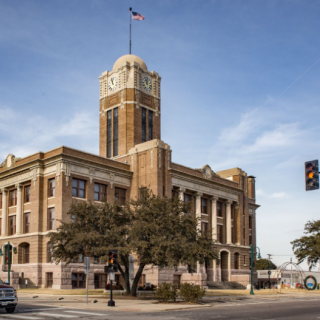My dad slumbered quietly as the Twin Towers fell sixteen years ago. He stirred and murmured, “What’s that?” I replied, “Nothing Daddy,” even though my eyes glued to the TV in disbelief. In that moment, I was glad Alzheimer’s had stolen his memory.
As a kid, I wondered why my dad, a brilliant steel industry engineer, jetted each week to New York and back. When the World Trade Center complex opened in 1973, I knew. He bragged in 1993, “We build them to last!” when terrorists detonated a bomb in a garage below one of the Towers, injuring many, but leaving the structure intact. This time, I watched in horror and wondered how Saudi pilots could destroy America’s most iconic buildings. I needed to look back only one week for a possible answer.
Seven hundred miles away in rural southwest Michigan, the feds were cleaning up a bloody standoff that left marijuana advocates Tom Crosslin and his partner Rollie Rohm dead at the hands of FBI snipers.
It was Labor Day weekend at the Rainbow Farm, a wooded 34-acre paradise in rural Cass County, that Crosslin and Rohm had transformed into a modern day Woodstock. The Byrds, Tommy Chong, Merle Haggard and bands of all genres performed on its acoustically perfect outdoor stage.
The venue was also a mecca for marijuana. A place where hemp was extolled, bongs were sold and the movement made bold by political speech and signature drives to legalize.
The Rainbow Farm had its enemies, though, including Cass County Prosecutor Scott Teter. Groomed in the same reefer madness as current US Attorney General Jeff Sessions, Teter warned Crosslin about drug use at the festival, removed custody of Rolm’s young son and filed paperwork to forfeit the farm. Crosslin fought back, in part with the help of a non-profit we know well.
The Columbus Institute for Contemporary Journalism - province of Bob Fitrakis now Editor-in Chief of the Columbus Free Press – sponsored Rainbow Farm festivals under the umbrella of hemp. In a recent interview, Fitrakis recounted, “The county tried hard to shut down the farm. Police searched cars. They hid snitches at festivals. They even got a warrant for tax records – I feared they might come after us.”
Teter’s relentless antagonism didn’t sit well with Crosslin, who eerily equated his predicament to a similar siege at Ruby Ridge. In the tradition of a Michigan militiaman, he wouldn’t go down easy, nor would he give up the farm. So on the Friday before Labor Day 2001, Crosslin and Rohm began burning the Rainbow Farm. Building by building.
Hearing of the escalation, South Bend, Indiana’s WNDU-TV dispatched a news helicopter. Supposedly mistaking it for the cops, Crosslin fired at it. Though no one was injured, that shot would be felt around the world. It begat a siege over the next two days that involved 50 FBI agents, an armored personnel carrier and three sharpshooters, all operating 24/7 from stakeout points around the farm.
On a supply run through a nearby woods, Crosslin stumbled upon the FBI snipers. Raising his rifle, they shot him in the head. The next morning, snipers from the Michigan State Police killed Rohm with a shot to the chest.
The dreadful standoff that concluded on September 4, 2001 would make the likes of Jeff Sessions proud: Teter, who conducted the “official” investigation, called the two deaths “justifiable homicide.”
Meanwhile, a mere seven days later, Saudi nationals slammed commercial airliners into the Twin Towers and the Pentagon, killing 2,996 people. This excludes the injured and the ripple effect to countless others who in disbelief witnessed the devastation vicariously.
Let that sink in. Exactly one week before the worst terrorist attack ever on US soil, 50 FBI agents placed the Rainbow Farm in rural Michigan under siege, killing two marijuana aficionados, while instead these same agents could have been unraveling a plot to kill thousands and obliterate skyscrapers in major cities.
According to the 9/11 Commission Report, the FBI opened anti-terrorist investigations in field offices such as Detroit, but “never used the information to gain a systematic or strategic understanding.” The report went on castigate FBI leadership for its unwillingness to shift resources away from traditional “drugs and thugs.”
Essentially, by focusing agency energy on marijuana and the Rainbow Farm, the FBI took its eye off the ball … and the terrorists took deadly advantage.
There’s a lesson for Jeff Sessions here. The only madness connected with reefer involves the brutal and overzealousenforcement of unpopular laws that causes much greater dangers to be ignored.
The Rainbow Farm will certainly be remembered as an idyllic, iconoclastic and idealistic paradise. But it should also be remembered for what might have been, had law enforcement been paying attention.
In memory of my dad and the buildings that he loved.
Epitaph:
Perhaps because of 9/11, no one came after the CICJ. Rohm’s family filed a wrongful death lawsuit that was dismissed. Crosslin’s will left the farm to Rohm’s son, who became a minister. The property has since been sold as 3-7 acre plots. The old stage still stands as does the cross where Tom was shot. The movie, Burning the Rainbow Farm, based on a book of the same name is currently in production.



